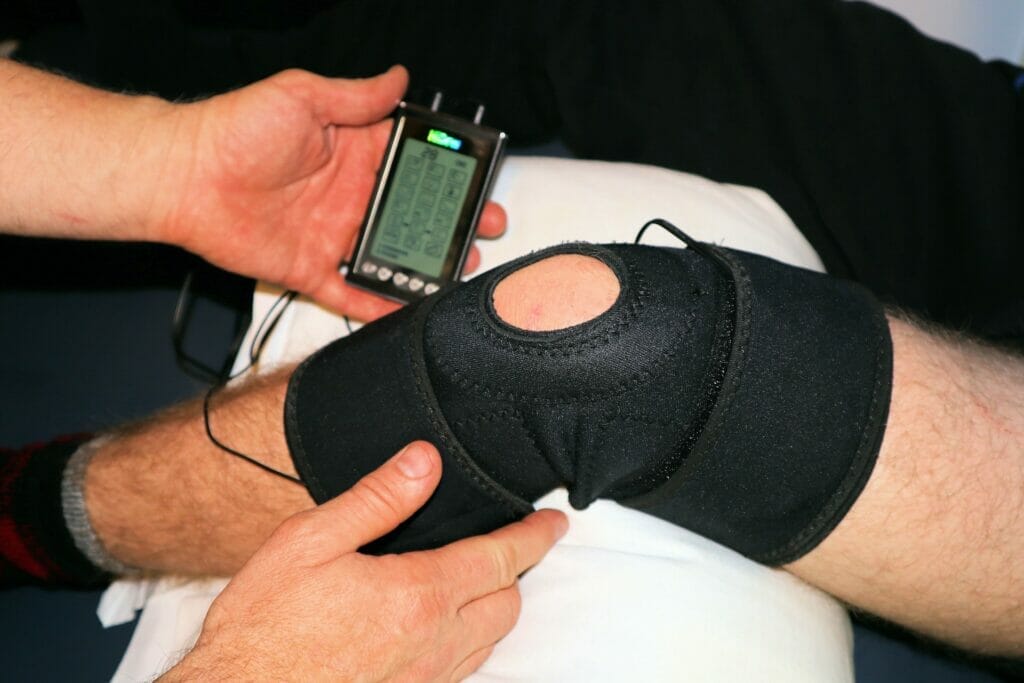The knee is a hinge joint comprised of three different bones and is the largest joint in the body. These bones are as follows, the Femur, the Tibia and the patella (kneecap). These bones are held together by 4 main ligaments: Medial and lateral collateral ligaments on either sides of the knee that stabilise the knee, the anterior and posterior cruciate ligaments at the front and back of the knee that prevent the femur from shifting too far over the Tibia. The most prominent muscles of the knee are the Quadriceps- which provide strength and extension of the knee and the Hamstrings- which bending the knee. Either side of the condyles of the Tibia and femur are the medial and lateral meniscuses. These are tough rubber like that cushions that acts as a shock absorber.

Osteoarthritis is a condition that causes the joints to become painful and stiff and is the most common type of arthritis (which is a general term for the inflammation if joints). It is caused by the gradual wear and tear of the cartilage found at the end of bones within a joint, such as between the femur, patella and tibia. Cartilage is a firm and rubbery substance and acts as a shock absorber and stops the bones from rubbing against each other, therefore supporting the joint. As this cartilage begins to deteriorate the knee and the ligaments and muscles begin to stretch the bones move closer together and causes irritation, inflammation, joint stiffness and a painful knee.
A bursa is a fluid filled sack that is spaced between two moving parts. Their primary role is to allow a smooth movement of muscles and tendons over bony surfaces. The bursa in front of the kneecap is prone to irritation, especially when people injure their knees or perform activities that involve kneeling on hard surfaces. A painful knee is symptomatic of localised joint swelling/redness, stiffness and difficulty walking.
Inflammation of the bursa, called prepatellar bursitis (housemaids' knee) and common in people who do flooring work or cleaning work and have to spend a lot of time kneeling.
As previously stated, the knee is comprised of four major ligaments. The most commonly injured of the ligaments is the ACL (anterior cruciate ligament) one of the ligaments inside your knee. This is due to the biomechanics of the knee and the ligaments job to the stop the femur shifting forward, stabilising the knee.
ACL injuries mostly occur in sport, due to the sudden change in direction, such as in football or netball. However, the ACL and MCL (medial collateral ligament), alongside the medial meniscus can all be damaged at the same time and is regarded as one of the worst painful knee injuries.
Common symptoms of knee ligaments injuries are swelling, painful knee when walking, instability (for ACL travelling down the stairs) and mild swelling around the knee.
Tendonitis is an inflation of the part of the muscle that directly attaches to the bone. The most common of which is patella tendonitis, also known as Jumpers knee, occurs when the tendon that attaches the quadriceps to the patella becomes inflamed causing the painful knee. This is usually caused by repetitive motions such as running and jumping and can be made worse by overstressing the tendon.
If you are suffering from a painful knee and are looking for expert advice and treatment, we may be able to help. Book an appointment here, contact our team at info@theartofhealing.uk or Call us on 0203 146 6755